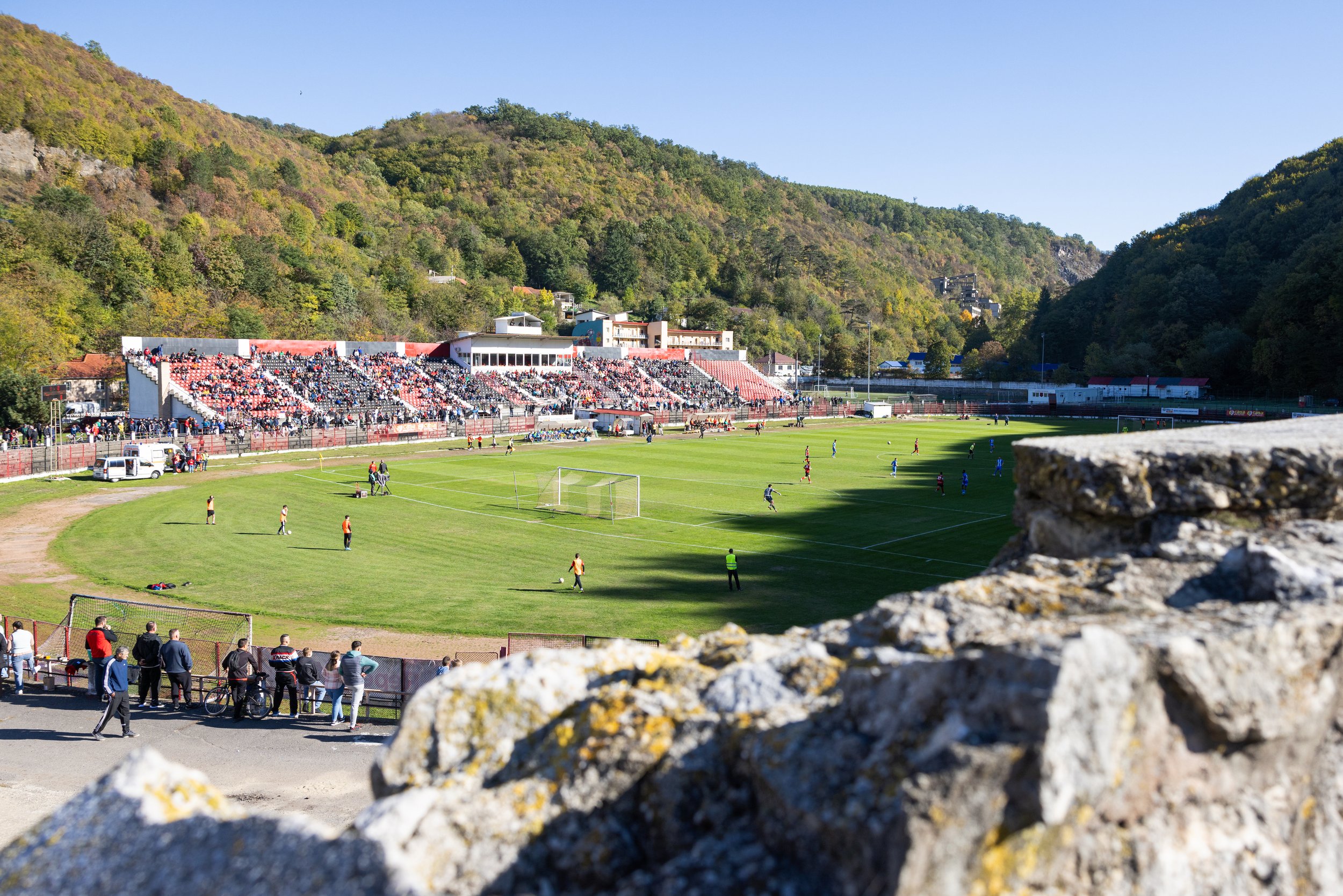A change of Ayr

Words: Mike Bayly
Images: Mike Bayly
Scotland has been described as a country where the past is ever-present. This is true of its football grounds.
Witness the moss-strewn cinder terracing embracing Vale of Level’s Millburn Park, the Titan Crane looming over Greenock Morton’s ancient Cappielow, or Fraserburgh’s 100-year-old main grandstand abutting the North Sea in Aberdeenshire.
These are spaces where the gods of change have been vanquished. Such venues would be outliers in the English game. North of the border they are commonplace. To borrow from L. P Hartley’s The Go Between, “Scotland is a foreign county: they do things differently there”.
These working museums of football are inevitably popular with ground enthusiasts. Not least those of an older persuasion who have witnessed the terraces and stands of their formative years bulldozed out of existence.
As someone approaching their fiftieth birthday, I am very much part of the ‘older persuasion’ demographic.
©Mike Bayly/ Terrace Edition. Ayr United vs Dundee United.
Middle age also arouses existential thoughts. When planning a trip to Ayr United’s Somerset Park, a much loved Victorian-era stadium complete with Archibald Leitch stand, I pondered why yesteryear venues like this hold infinitely more appeal to me than a trip to new a state-of-the-art stadium.
Historical appreciation alone doesn’t cover it. Neither does nostalgia: I don’t cleave to a mythical gilded past or subscribe to the folly that things were ‘better in my day’.
It had to be something else.
As we age, it can be difficult to reconcile our place in a world that feels like it is evolving outside of our purview. When, for example, I look at the sleek functional symmetry and faultless sightlines of modern football stadia, it doesn’t resonate with me.
To a younger supporter in England, this design blueprint may be all they have ever known. That isn’t to say older venues don’t have sentimental value to someone who hasn’t experienced them.
©Mike Bayly/ Terrace Edition. Ayr United vs Dundee United.
It is even possible to be nostalgic for a past you haven’t lived: the Dictionary of Obscure Sorrows refers to this condition as anemoia.
My own experience of the pre-Premier League era wasn’t vicarious though. My early years as a football fan in the 1980s were spent in environments that looked very different from today; a chaotic but characterful ensemble of pre- and post-war stands, corrugated iron cowsheds, totemic floodlight pylons and packed standing terraces.
While football from this era was riven with social and structural problems - to suggest otherwise would be disingenuous - these mostly vanished grounds reflect a stage in my life of boundless wonder and sense of place, when I felt like a participant rather than an observer.
To visit somewhere like Somerset Park, so redolent of this period, was a fleeting chance to rekindle these feelings and take a brief sabbatical from modernity.
Even among thousands of strangers, I felt like I belonged.
©Mike Bayly/ Terrace Edition. Ayr United vs Dundee United.
Somerset Park was constructed in 1888 by Ayr FC, who merged with Ayr Parkhouse in 1910 to form the current Ayr United.
The Leitch Main Stand, built in 1924, was extended in 1989, looking out towards the horseshoe of terracing on three sides of the ground.
Save the later addition of cover at the Railway End and Somerset Road End, the stadium remained broadly unchanged for almost a century. In 2022, plans were announced to redevelop the pitch-length north terrace, incorporating 700 seats, hospitality suite and standing area under a cantilevered roof.
While traditionalists will mourn the loss of this vast terrace, the new stand is important to the club’s long-term future. The project is under construction, leaving Somerset Park in a liminal space between past and future.
Rising from this closed off terrace was a metaphor for my stage of life.
I am happy grounds like Somerset Park still exist. I am also mindful that change is inevitable and can be daunting: we may be able to revisit the past, but we can’t recreate it. I often wonder what Britain’s football landscape will look like in my twilight years.
I suspect much of it will be unrecognisable. Even Scotland’s must stubborn outposts will eventually succumb to progress. Or entropy. But to a new generation of fans not yet born, it will be new, exciting and above all, belong to them.
©Mike Bayly/ Terrace Edition. Ayr United vs Dundee United.
©Mike Bayly/ Terrace Edition. Ayr United vs Dundee United.
©Mike Bayly/ Terrace Edition. Ayr United vs Dundee United.
©Mike Bayly/ Terrace Edition. Ayr United vs Dundee United.
©Mike Bayly/ Terrace Edition. Ayr United vs Dundee United.
©Mike Bayly/ Terrace Edition. Ayr United vs Dundee United.
©Mike Bayly/ Terrace Edition. Ayr United vs Dundee United.
©Mike Bayly/ Terrace Edition. Ayr United vs Dundee United.
©Mike Bayly/ Terrace Edition. Ayr United vs Dundee United.
You can follow Mike on Twitter and Instagram: @Mike_Bayly.

















